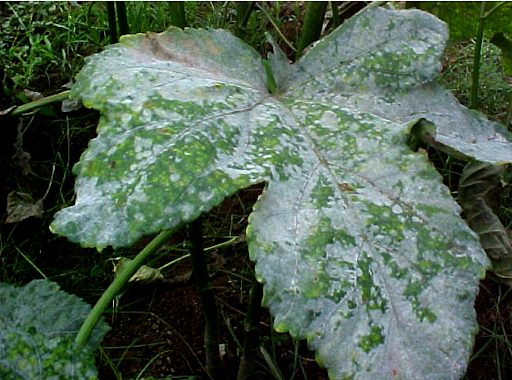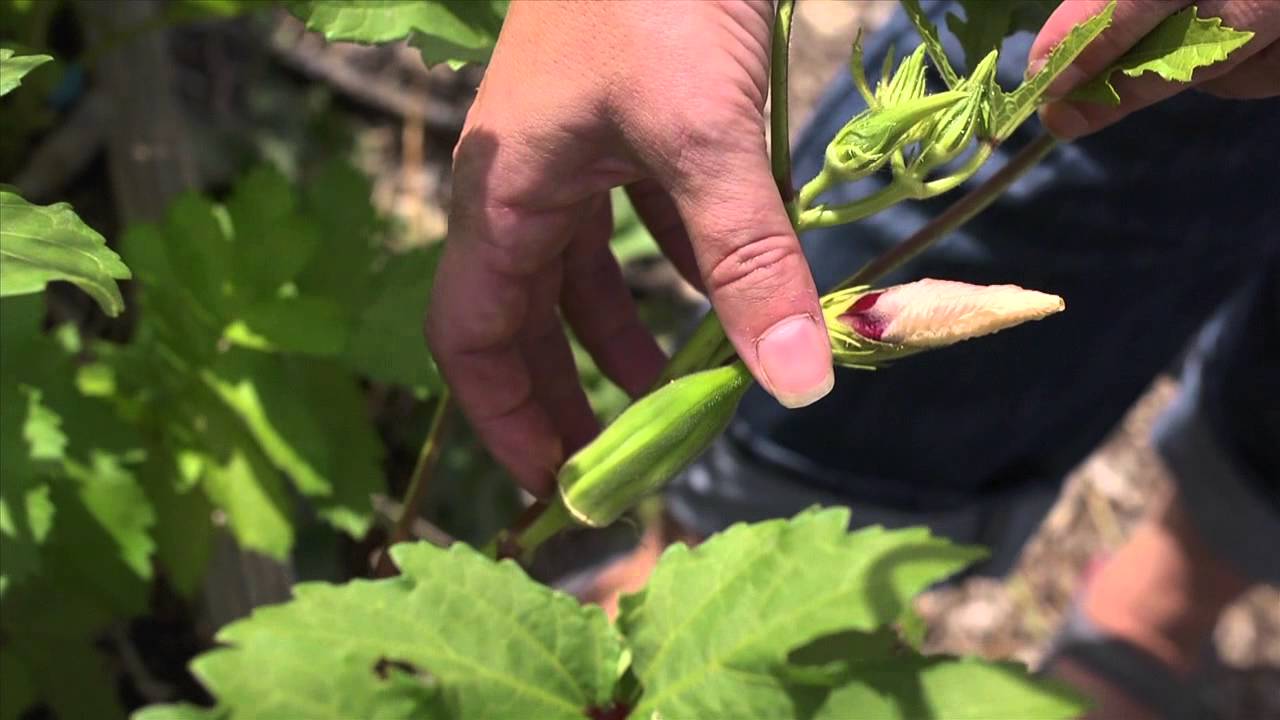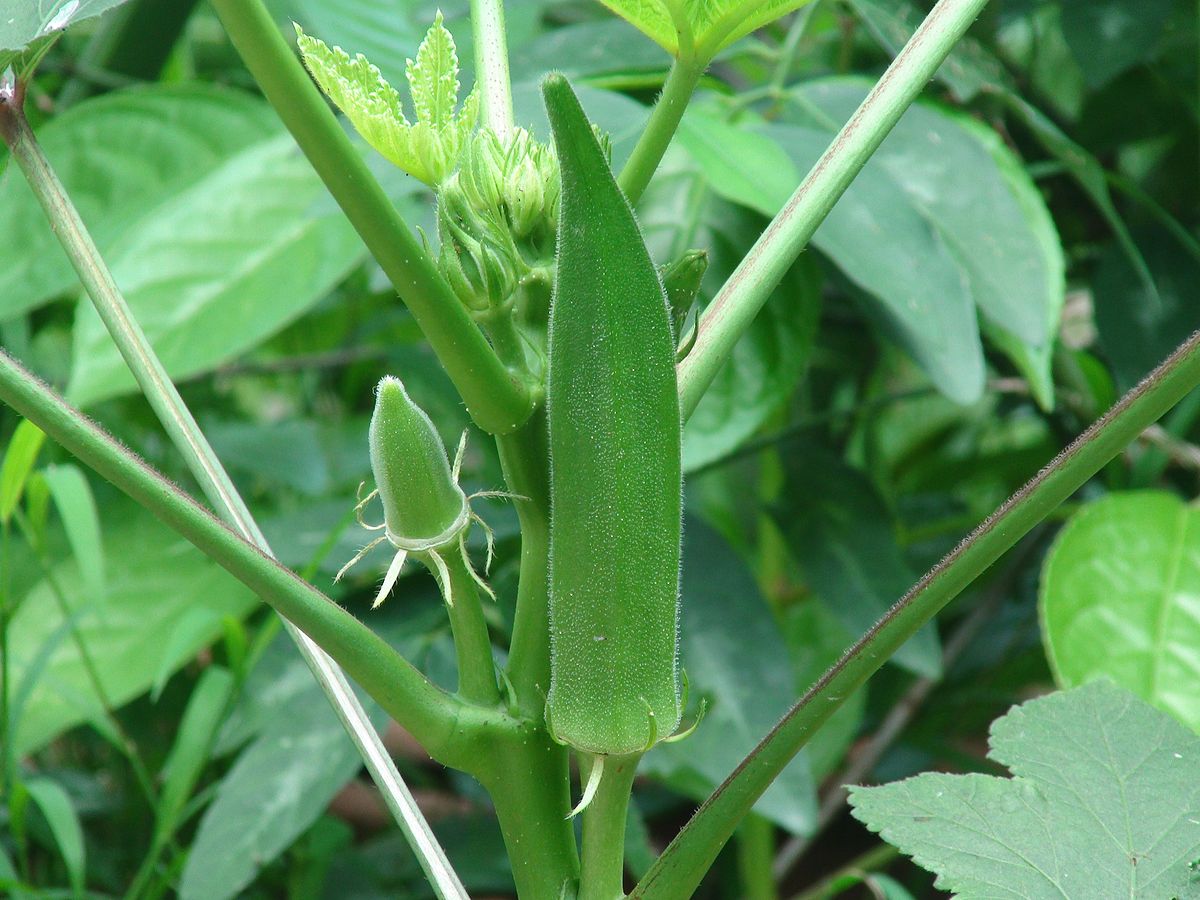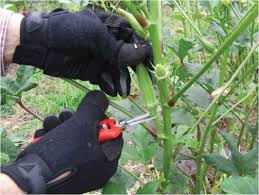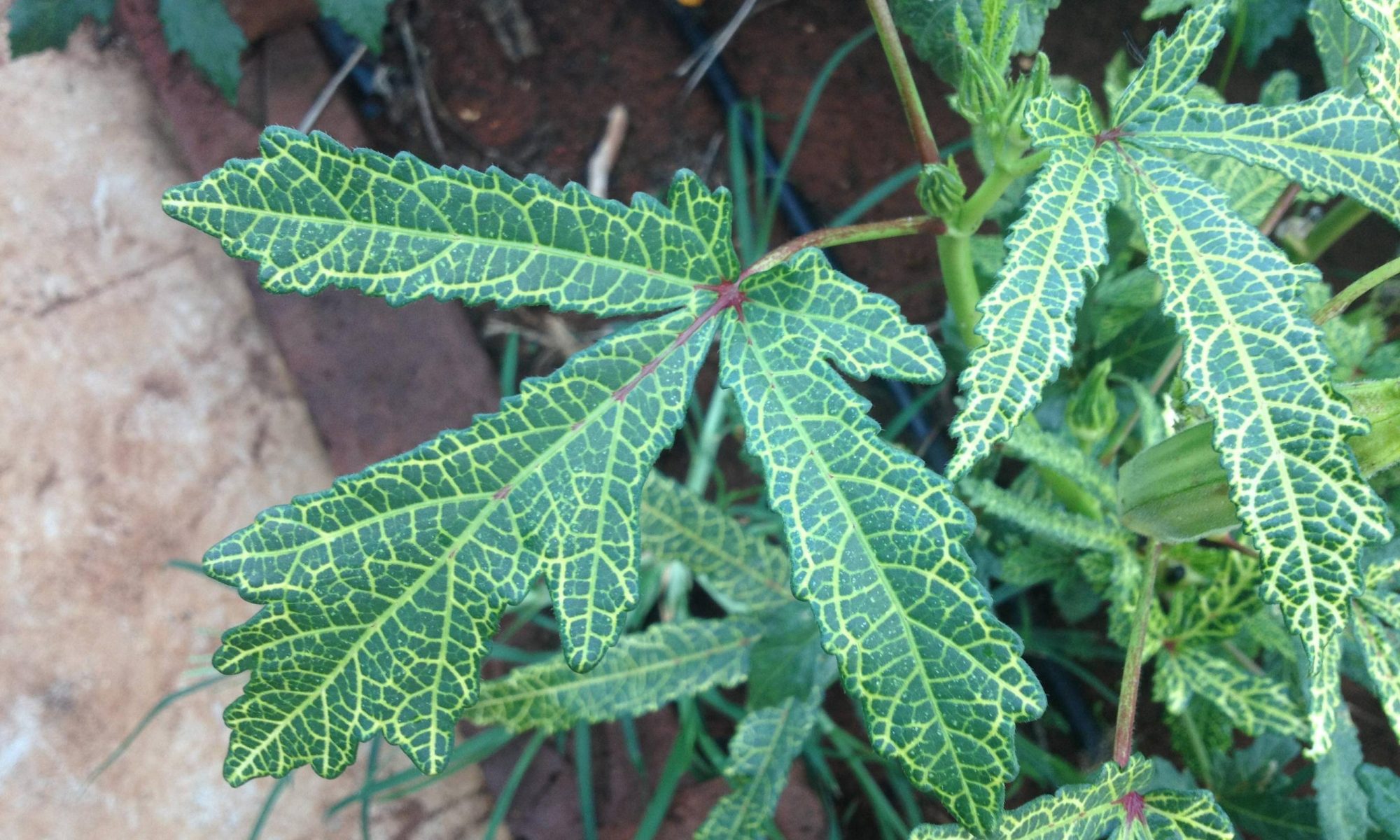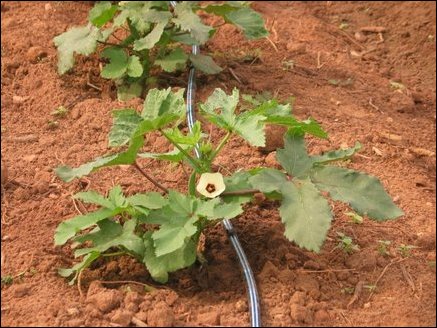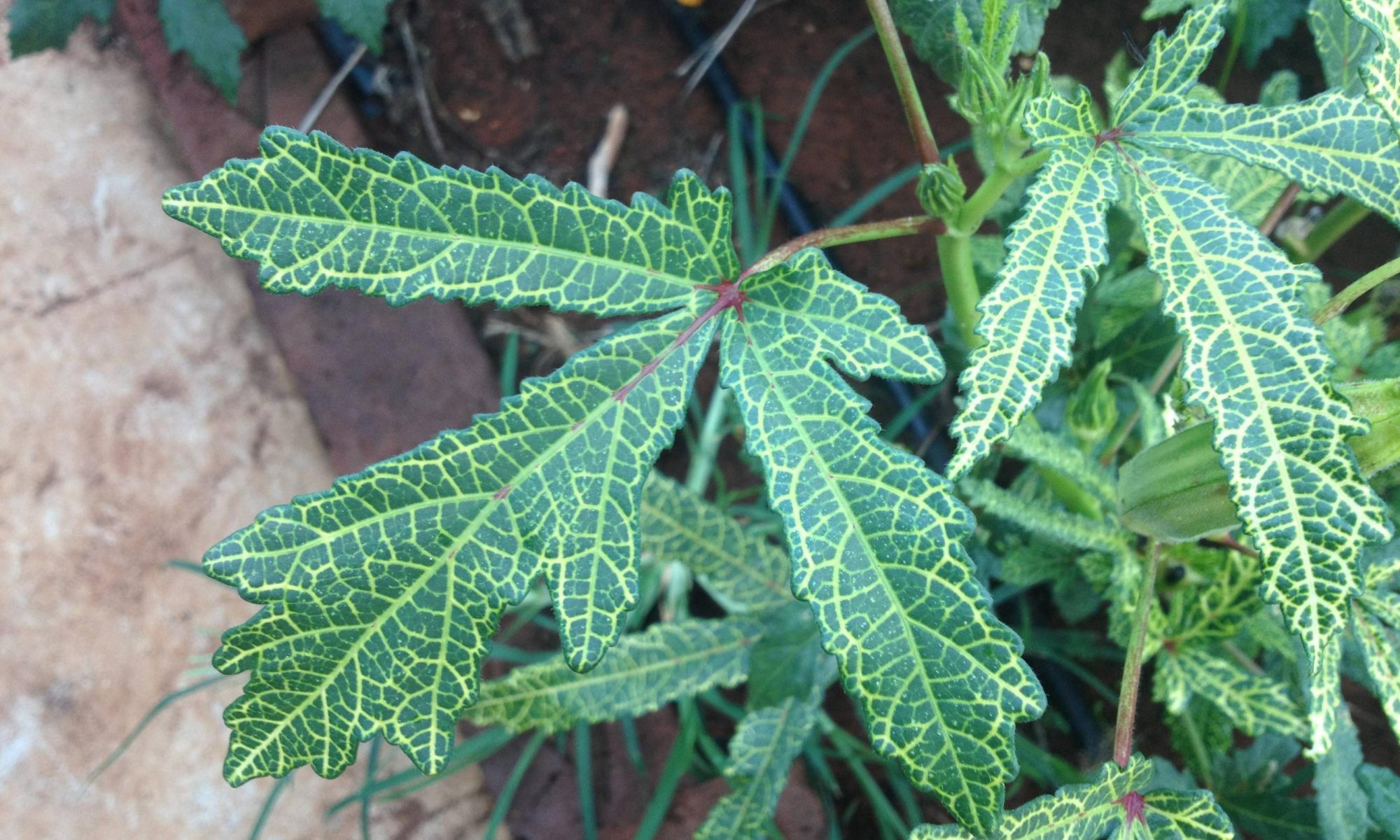- White-brown powder develops on the lower and upper surface of the leaves, causing a serious reduction in fruit yield.
- It severely infected fungus in okra crop.
- Spraying of Hexaconazole 5% SC 400 ml or Thiophanate methyl 70 WP or Azoxystrobin 23 SC 200 ml per acre in 200 to 250 liters of water at an interval of fifteen days.
Pest attacks may occur in the change of weather
- Due to the change in the weather, many types of pests can attack crops because the moist environment condition is suitable for it.
- There is a possibility of attack of Red Beetle insect in Summer Cucurbits vegetables, if the large number of this insect then spraying of Cypermethrin 4% EC + Profenophos 40% EC 400 ml or Bifenthrin 10% EC 200 ml or Dichlorovos 76 EC 300 ml / acre.
- Spraying Thiamethoxam 25 WG 5 gm/ 15 liters of water in the okra to control the sucking insect such as white fly, aphid, jassid etc.
- There is a high possibility of Thrips in Onion crop so spraying Profenophos 50 EC @ 45 ml or Lambda cyhalothrin 4.9% CS @ 20 ml or Spinosed @ 10 ml or Fipronil 5 SC @ 15 liters water per acre.
- Use 0.5 ml mixture with insecticide in 15 liters of water, so that the insecticide is absorbed by the plants properly.
How to get more fruits with every picking in okra
- To take more picking in Bhindi crop 2 weeks before sowing, mix the FYM in the field equal to 10 tons/acre in the field, thereby increasing the absorbing capacity of the nutrients in the plant.
- At the time of sowing, mix nitrogen-fixing and phosphorus solubilizing bacteria with fertilizers in the field at the rate of 2 kg/acre.
- Give the quantity of nitrogen (60-80 kg per acre) at the time of sowing and half quantity remaining 30 days after sowing, thereby increasing the number of fruits per branch per vinegar and it can be increased by 50% production.
- Approximately 40 to 50 days after the sowing of the okra starts to give fruits.
- Before the first picking, gives calcium nitrate + boron @ 10 kg/acre, 10 kg magnesium sulphate 10 kg/acre + Urea @ 25 kg/acre with Nitrogen Fixation and Phosphorus Solublizing bacteria @ 1kg/acre.
- During flowering in okra give Ammonium sulfate at the rate of 55-70 kg/acre, it is important for the development of the fruits.
Weed management in Okra
- Apply deep ploughing before sowing.
- Follow Crop rotation, using such crop as grasses and small grains.
- Hand weeding 2-3 (20,40 and 60 days) after sowing.
- Spray of oxyfluorfen 23.5 EC @ 200 ml/acre at after sowing and pre-emergence.
- Spray of Pendimethalin 30% EC 700 ml/acre in three days after sowing.
- Spray of propaquizafop 10% EC 400 ml/acre at 2-3 leaf stage of weeds for the controlling of narrow leaf weeds.
Like and share with other farmers by clicking on button below
SharePicking process in Okra
- Harvesting the fruits when they attained maximum size but still tender.
- Fruits of 6-8 cm long are preferred for export purpose.
- Harvesting is done in alternate days with a knife or by bending pedicel with a jerk.
- For harvesting, cotton cloth hand gloves should be used to protect fingers from stinging effect.
- It is Advisable to harvest in morning hours since fruit hairs are soft.
- Sprinkling water on pods during night will keep them cool and fresh for market.
Like and share with other farmers by clicking on button below
ShareManagement of Yellow Mosaic Disease in Okra/Bhindi
Yellow Mosaic Disease in Okra/Bhindi:-
- This is the most important and destructive viral disease in bhindi.
- The disease infects at all the stages of crop growth and severely reduces growth and yield.
- The disease is transmitted by whitefly.
- The characteristic symptoms of the disease are a homogenous interwoven network of yellow veins enclosing islands of green tissues.
- Initially, infected leaves exhibit only yellow coloured veins but in the later stages, the entire leaf turns completely yellow.
- The fruits of the infected plants exhibit pale yellow colour, deformed, small and tough in texture.
Control-
- Remove and destroy disease-affected leaves/plants from crop fields to avoid secondary spread.
- Parbhani Kranti, Janardhan, Haritha, Arka Anamika and Arka Abhay can tolerate yellow vein mosaic.
- Do not use high fertilizer during plant growth.
- Do not roted okra with other hosts of virus.
- If possible, choose early planting to the controlling of yellow mosaic virus disease.
- Keep sanitation while using any tools that are using in crop.
- Use 4-5 sticky trap/acre to the controlling of whitefly infestation.
- Spray imidacloprid 17.8% SL 80 ml/acre for the controlling of whitefly.
- Spray dimethoate 30% EC 250 ml/acre of water.
Like and share with other farmers by clicking on button below
ShareIrrigation Management of Okra
Irrigation Management of Okra:-
- First irrigation should be given when first true leaf initiates in springs summer and when it expands in Kharif season.
- Subsequent irrigations at 4-5 days Intervals are given to summer crop.
- If temperature goes around 40 0C frequent light irrigation are recommended for proper fruiting.
- The soil should be kept moist and flooding or wilting of plants should be avoided.
- Moisture stress during flowering and fruit/seed setting causes around 70% crop losses.
- The nutrient uptake from soil is also at peak during fruit set and development stage.
- A water stress in the field during this period not only cause yield reductions but also affects the nutritional status of the fruits.
Like and share with other farmers by clicking on button below.
ShareControl of Yellow Mosaic Disease in Okra
- Remove and destroy disease-affected leaves/plants from crop fields to avoid secondary spread.
- Parbhani Kranti, Janardhan, Haritha, Arka Anamika and Arka Abhay can tolerate yellow vein mosaic.
- Do not use high fertilizer during plant growth.
- Do not roted okra with other hosts of the virus.
- If possible, choose early planting to the controlling of yellow mosaic virus disease.
- Keep sanitation while using any tools that are using in crop.
- Use 4-5 sticky trap/acre to the controlling of whitefly infestation.
- Spray imidacloprid 17.8% SL 80 ml/acre for the controlling of whitefly.
- Spray dimethoate 30% EC 250 ml/acre of water.
Like and share with other farmers by clicking on button below
ShareYellow Mosaic Disease in Okra/Bhindi
- This is the most important and destructive viral disease in bhindi.
- The disease infects at all the stages of crop growth and severely reduces growth and yield.
- The disease is transmitted by whitefly.
- The characteristic symptoms of the disease are a homogenous interwoven network of yellow veins enclosing islands of green tissues.
- Initially, infected leaves exhibit only yellow-colored veins but in the later stages, the entire leaf turns completely yellow.
- The fruits of the infected plants exhibit pale yellow color, deformed, small and tough in texture.
Like and share with other farmers by clicking on the button below
ShareSymptoms and control of Fusarium wilt in Okra
- Initially, the plants show temporary wilting symptoms which become permanent and progressive.
- The leaves of the affected plants show yellowing.
- Eventually, the plants die.
- The fungus invades the root system and colonizes the vascular symptoms.
- In doing so, water movement is blocked and toxins from the fungus alter normal cell function.
- Cutting the base of the stem revel a dark woody portion.
Management
- Continuous cultivation of okra on the same piece of land should be avoided.
- Seed treatment with Carboxin 37.5% + Thiram 37.5% @ 2-3 g/kg of seed OR Thiophanate Methyl 45% + Pyraclostrobin 5% FS @ 2 g/kg of seed.
- spray and drenching with Thiophanate methyl 70% WP @ 400 g/acre.
- Azoxystrobin 18.2% + Difenoconazole 11.4% SC @ 200 ml/acre.
- RFor bio management, apply Trichoderma viridae for soil application and foliar spray. It controls all types of fungal infections in the crop.
Like and share with other farmers by clicking on the button below.
Share
